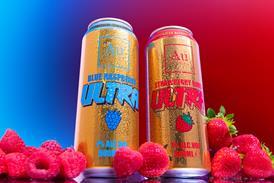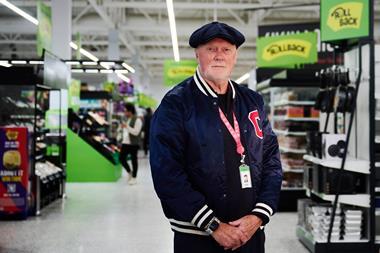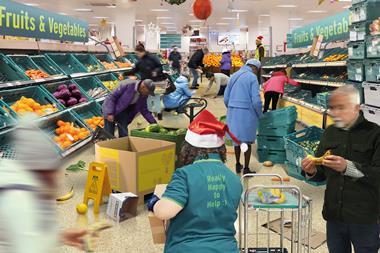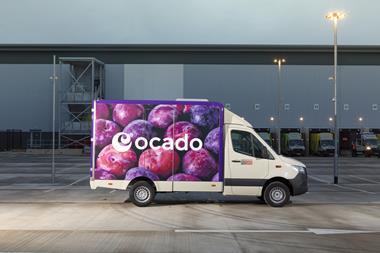Despite last-minute rumours to the contrary, the HFSS rules are now live. It’s been a right upheaval. Are you up to speed?
When Boris Johnson first announced a crackdown on unhealthy ‘HFSS’ food and drink products in July 2020, supermarkets had a choice. They may be legally bound to follow the letter of the law, but would they follow the spirit of it?
To put it another way, would they make a genuine effort to hide unhealthy foods away inside aisles as the law intended? Or would they look for loopholes to keep them prominent and continue to drive impulse purchasing of chocolate, sweets and crisps?
With the law now in full force, it is becoming clearer which way each store fell. For a long time, the big question mark facing retailers was what to do with gondola ends from where HFSS foods are now banned. They are a big boost for sales, with shoppers on average 2.6 times more likely to visit that category’s main aisle if they’ve spotted something in the gondola end, according to Shopper Intelligence research. This trend is particularly strong on impulse products like chocolate.
But if the government believed these items would disappear inside aisles once the law began, it will be disappointed. In one Tesco store last month, Quality Street, Celebrations and Cadbury Roses were found piled high on pallets in the entrance. As Bryan Roberts, IGD’s global insight leader, points out, Tesco has seemingly spotted a loophole in the rules. After all, there are “no gondola ends if you remove the aisle”.
For now at least, this tactic is unusual. Most supermarkets have opted to move HFSS products away from the front of stores and into the aisle. But this itself is not always without controversy. At Sainsbury’s, for example, many stores have moved the products just around the corner to the first bay of the aisle, seemingly testing the limits of what exactly a gondola end is as defined in the law. The truth is, the definition is vague, meaning that, as Roberts suggests, Sainsbury’s may end up “obeying the letter of the law but not the spirit”.
Other rules are clearer cut. No unhealthy food or drink can be displayed within two metres of a checkout, for example. But that doesn’t mean they are always simple. A formula devised to dictate what counts as ‘close to the entrance’ calculates the minimum allowable distance as the square root of the area of the store multiplied by 0.03. This means that there are different rules for each shop, with the potential distance varying from 2.4m for small stores to 5.4m for big ones.
In some cases, these distances can fall in tricky spots. Some stores have their perimeter cut right through their food-to-go displays, leaving them with little choice but to flip products around (sandwiches swap with chocolate, for instance) to align with the rules.
When it comes to replacing the space vacated by HFSS items on gondola ends, both Sainsbury’s and Tesco have gone for flat promotional boards in many cases, encouraging shoppers to join the Nectar loyalty scheme or use the Smart Shop app. And Sainsbury’s may have also found a new revenue stream by turning them into ads for HFSS-compliant brands such as Nature Valley. Other stores have turned them into smaller branded displays containing a small selection of goods for compliant brands such as Graze.
Cadbury promotional bay in a Tesco aisle
Gum is benefiting from the space freed up in store
New winners
The space is a clear opportunity for reformulated or naturally compliant brands. The same goes for exempt categories like alcohol, with a number of retailers putting in big displays of beers, gins, and premium mixers over the summer. “I think booze will do well out of it,” says Steve Dresser, CEO of Grocery Insight. “We’ll see a lot more booze deals, particularly at the front of the store.”
But the loss of confectionery from prominent locations will hurt supermarkets, given these products often provide a wide variety of potential offers and placements, Dresser says. “Without confectionery deals, it’s hard to see what they’ll do. Other deals like toilet paper and cleaning products can end up quite repetitive.”
Supermarkets aren’t giving up on promoting HFSS foods entirely though. In-aisle promotional activity is taking off, particularly at Asda and Tesco, which are busy installing digital screens to signal certain products or brands. Brian Ross, Tesco store manager in Dundee, says the screens have changed the whole dynamic of the store. “It feels more modern and makes that promotion come to life,” he says. “It’s all about shouting price.”
Tesco is also using its ‘Better Basket’ zones, introduced in May, to signpost healthier products at affordable prices. These mid-aisle zones contain a range of snacks and sweet treats under 100 calories, sometimes using digital screens to help promote them.
But so far there is little to impress the critics. “We haven’t seen anything overly innovative,” says Dresser. “I don’t think anyone can really stand out, as you’ll literally be looking at in-aisle activity. The aisle has become pure prime real estate.”
Batteries, cards, and magazines fill up one checkout
Staff training
Many shoppers are noticing the in-store changes and in some cases taking to social media to air their grievances. Stuart Lindsay, manager of Sainsbury’s West Green, recognises this, pointing out that removing a number of promotional ends has given his shop “a very different feel and look”, to which colleagues and shoppers are still adjusting.
Some stores have therefore sought to help shoppers by communicating the legislative changes. This has taken the shape of new signs in entrances letting shoppers know the new legislation may mean some of their “favourite products” have changed location. Some have even trained employees in store on the new restrictions and the processes in place to facilitate those, so they can better communicate that clearly to shoppers.
One Sainsbury’s store manager says: “We’ve tried to make sure our checkout operators are the most informed colleagues in the shop, as they have conversations with customers who go through the tills, and quite often feel their frustration when we move products.”
Waitrose has gone further and carried a feature in its Waitrose Weekend newspaper to update customers on the changes and how they could encourage healthier options.
But with a large degree of uncertainty still hanging over the future of the HFSS rules, many stores remain reluctant to commit further resource to it. Trading Standards’ openness that it is unable to enforce the laws anyway is only adding to the hesitation.
Everything you need to know about HFSS but were afraid to ask
- 1
 Currently reading
Currently readingEverything you need to know about HFSS but were afraid to ask
- 2
- 3
- 4
- 5
- 6
- 7
- 8
- 9



























No comments yet